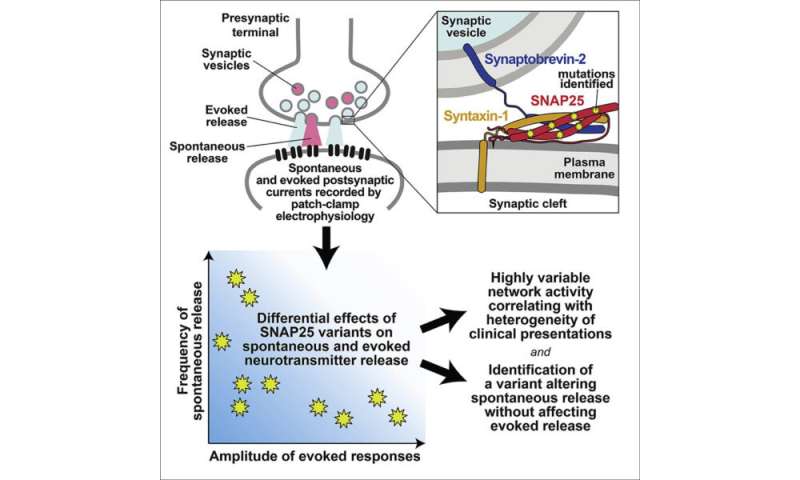
Vanderbilt pharmacologists have reported the first evidence that aberrant spontaneous release of neurotransmitters in the brain can cause a range of severe intellectual and neurodevelopmental disorders in infants and children.
Ege Kavalali, who holds the William Stokes Chair in Experimental Therapeutics and is acting chair of pharmacology, and postdoctoral scholar Baris Alten, describe their research in the article, “Role of aberrant spontaneous neurotransmission in SNAP25-associated encephalopathies,” published in the journal Neuron on Nov. 3.
Neurons, the billions of cells constantly sharing information within the brain, communicate with each other but do not touch. They release chemicals called neurotransmitters, orchestrated by the SNARE protein complex, triggered by a wave of electrical activity. With this “evoked release” of neurotransmitters, information jumps from one neuron to the next. This neurotransmission enables us to complete basic tasks, process sensory information and move our bodies. Mutations of one of the proteins in the SNARE complex, SNAP25, are known to cause a variety of neurodevelopmental disorders. These can present with recurrent seizures, intellectual disability and autistic features in infants and children.
This discovery marks the first step toward developing specific treatments that can improve cognitive outcomes in youth and adulthood.
By examining the electrical signals of 10 different SNAP25 mutations among 11 patients, the researchers found that mutations of SNAP25 encourage anomalous neurotransmitter release both in response to electrical activity and independent of electrical signaling in the brain. More importantly, they identified the single mutation that causes spontaneous release—neurotransmitter release even in the absence of appropriate electrical activity.
Traditionally, the diagnosis of cognitive disorders caused by SNAP25 mutations has been so clinically challenging that researchers assume that their incidence is underestimated. In addition, the complete lack of understanding of the disease mechanism has made it impossible to develop therapeutics tailored to patients.
“We now know that this spontaneous neurotransmission caused by a mutated SNAP25 causes an array of disease in children, including diminished verbal and fine motor skills, seizure and other developmental milestone delays,” Kavalali said.
This is the first known research finding that suggests spontaneous neurotransmission causes disease. Previously, researchers thought only neurotransmission that had been evoked by electrical activity caused disease. “We recently showed that impairments in evoked release can be restored, and now we have learned that therapeutics have to target spontaneous neurotransmitter release to fully address the disease mechanism,” Alten said.
The researchers intend to use this new discovery to develop pharmacological therapeutics that target spontaneous neurotransmission.
Source: Read Full Article
